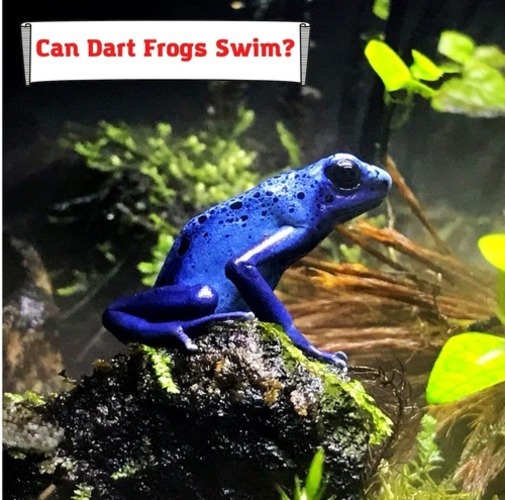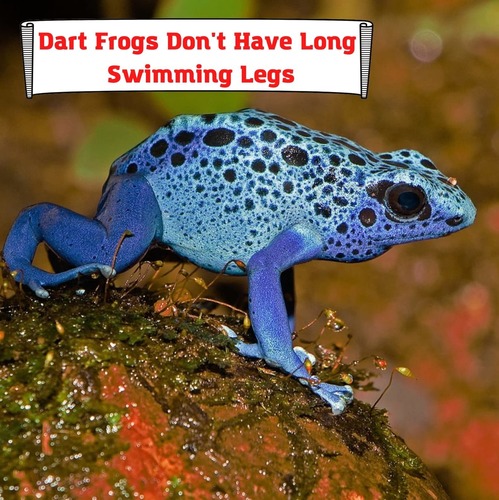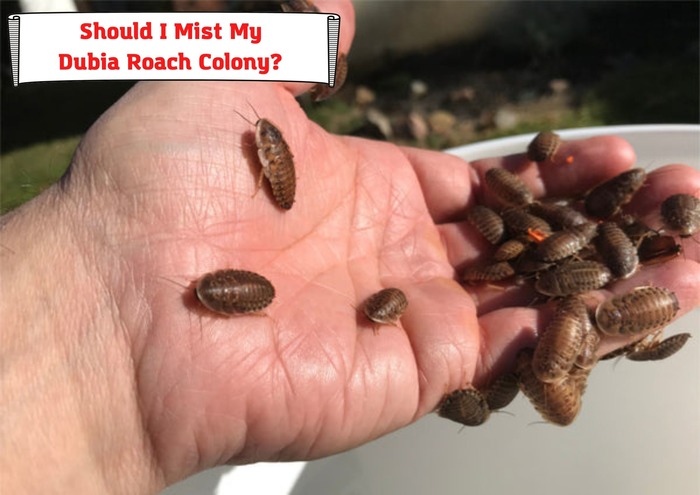
There are many misapprehensions about poison dart frogs. The usual concern about these frogs is associated with their poisons, and whether they can swim or not. With their unusual name and toxic behavior, it’s no marvel to have a lot of misunderstandings about their status.
You might think of the questions like, are they harmful? Can they swim in water or not? So, here’s some solid information you may want to know about dart frogs also known as dash frogs.
Can Dart Frogs Swim?
Dart frogs in common are lovely conventional swimmers. Most times, they will swim pretty decently in water. Still, if they fail to swim occasionally, the reason behind this could be a fundamental therapeutic issue or some sickness.
Yes, they can swim but get tired out rapidly. Maybe this is because their feet aren’t well prepared (i.e., non-webbed). If you include water in your tank, it should be around 4 inches deep, and should include bounty areas for them to push out. As long as you have got induce-out points (as in no soak sides to induce out etc.), they ought to be fine.
Swimming Behavior of Dart Frogs
You should remember that dart frogs won’t be able to swim in water above their height. So, make sure to manage the water level when leaving the dart frog to swim because the risk of drowning for the dart frogs is extremely high.
Without any medical issues, most healthy frogs will swim fine in water until they have to be in the aquatic environment for a long time or swim for long distances. Then, drowning could be an issue.
Swimming is important for dart frogs as they spend a lot near aquatic environments. So, they need swimming to survive being inside and near hydrous habitats. A part of reproduction for the dart frogs is associated with swimming behavior. When females lay eggs, the male fertilizes them and the egg turns into a tadpole over time. That tadpole sits attached to the back of the female dart frog and is carried by swimming to an isolated place where it grows.
Contrary to popular belief, these frogs do not need to be constantly in water, swimming. Their most natural habitat is moist and humid and not soaking wet in deep oceans. But dart frogs do need their skins to retain moist for a prosperous life, so they will sometimes be found swimming in water.
Some Facts about Dart Frogs in Water

These dart frogs have multiple interesting facts about them. They are colorful, vibrant creatures, and people have a lot of misconceptions about them, their natural habitat, and their behavior. Dart frog is known as poison arrow frog or just poison frog as well.
The bright-colored skin of these frogs is an indication to predators that they should not be attacked due to their poisonous nature. Several poisonous frog species are under threat from the destruction of their natural habitats. Water is a big part of the ecosystem they survive in. So, do they need water to live, and are these dart frogs good swimmers?
Here are some interesting facts about dart frogs in the water.
Dart Frogs are not great swimmers because of their feet
While frogs, in general, can live underwater, different species of frogs have a different relationship to water. Dart frogs can sometimes swim when needed, but they are not born swimmers. The main reason for that is their lack of webbed feet.
Webbed feet are a characteristic of many animals that live in water, like ducks and many species of frogs. It is important to have webbed feet for animals to spend a lot of time in the water. But dart frogs don’t have that, so they clearly are not made for swimming often. Being an amphibian, they can remain in the water for some time.
A Moist and Humid Environment Is Their Natural Habitat
While they may not always live underwater, dart frogs need to be in high humidity with lots of moisture. But they can survive in the less humid places too. Their natural habitats include tropical and subtropical forests, marshes, rivers, freshwater sources, moist forests, areas near lakes, and even swamps.
Arable and pasturelands are also places where poisonous frogs can be found. Seasonal flooding and wetness are also suitable for these frogs’ habitats.
Mating Takes Place in Rainy Season and In Moist Places
The female and male dart frog mate during the rainy season near wet locations. The male poison frog chooses a moist and dark place when the rain season starts. He brings the female frog to that wet place, and the female dart frog releases her eggs onto a batch of leaves kept on a wet floor. Sometimes the female may lay as many as 40 eggs.
The male frog then fertilizes the eggs with his sperm, and the fertilized eggs are guarded for 15-18 days in a moist area. Being moisturized is important for the tadpoles to grow healthy, but eggs are never laid underwater.
When the eggs hatch to become tadpoles, the mother carries them on her back to an even more moist and safe area for proper growth. Dart frogs don’t usually mate in the dry season or a place without moisture.
Dart Frogs Lay Eggs on Moist Places
Being amphibians, dart frogs live on both water and land. They typically live in moist places and lay their eggs there. These places can be plants’ leaves or leaf litter lying on rivers, ponds, etc.
Water is important for the eggs to hatch. For this purpose, some dart frogs may even water their unhatched eggs or hatched tadpoles with their urine to keep them safe.
Dart Frogs Don’t Have Long Swimming Legs.

The main reason dart frogs are not in the water and swimming all day is their small legs. If you compare their legs with a common frog that lives and swims in water, you will notice that the legs of a poison frog are tiny while those on a common water frog are strong and long.
The long legs are significant in allowing the frog to swim without drowning, just like webbed feet. But since they are missing, the dart frog spends most time in wet places and not underwater.
Tadpoles Grow in Moist Places near Water
Mother dart frogs always carry their hatched eggs to a safe place near some water source. They also feed new tadpoles with their unfertilized eggs. Some dart mothers may carry each baby tadpole to its little pool.
Dart Frogs Don’t Have the Endurance to Survive In Water For Long
The bright color of the dart frog’s skin is given to it, so the predators don’t attack it. This protection due to bright colors is because the poison frogs don’t have the endurance to flee and protect themselves from potential predators.
There is a lot of strength required to swim for a long time in the water, which the dart frog simply doesn’t have. So, water is not their main habitat because they cannot endure swimming in the water. But they do swim and are strong enough to get out of the water they may have fallen in.
Paludariums or Enclosures for Dart Frogs
A dart frog will be able to live just fine in a paludarium or an enclosure with water. It will help you to maintain the moisture level needed for the frog. But make sure that no accessories will trap the frog inside the water, like overhangs or caves.
Also, you must ensure that there is a way for the poison frog to get out of the water easily, and they don’t have to go over obstacles to do that because dart frogs can’t live underwater for long.
Conclusion
It appears that some people accept that dash frogs can’t swim, which isn’t completely true. Dash frogs in common are beautiful, not too bad swimmers. Suffocation is the main reason behind the death of these frogs in the water. They secrete poisonous substances from their skin.
Today we’ve told you a lot about their swimming habits and ability to live in the water. Hope you’ve found answers to all your questions.
If you have any tips to care for dart frogs, share in the comments.
- Can Dart Frogs Swim? Some Facts about Dart Frog in the Water - February 24, 2022
- Is Superglue Safe For Reptiles? Good Brands and Types of Glue - February 21, 2022
- Can You Put A Heat Lamp On Glass? Some Concerns and Recommendations - February 19, 2022



